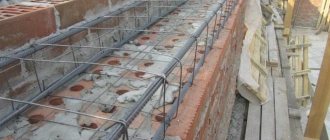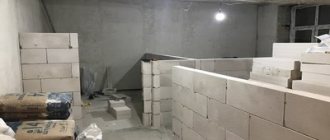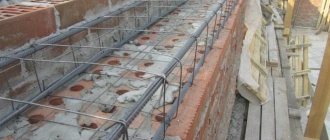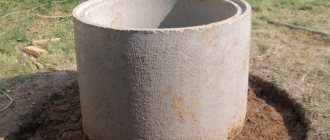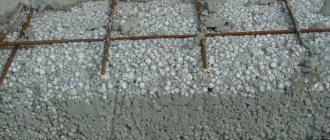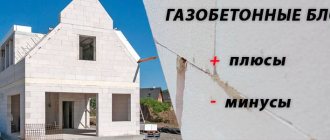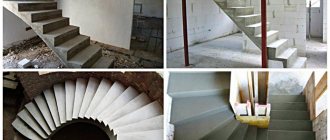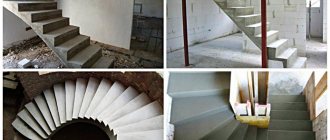Arbolite blocks are not a capricious material, but unique. And if the task is to lay them with your own hands, then there are usually no problems with this process. The only question private developers ask is whether it is necessary to reinforce wood concrete blocks. It is impossible to answer it unequivocally - yes, this is a necessity, or no, it is not necessary. Everything will depend on the design of the building.
Arbolit pros and cons
Why is it convenient to work with wood concrete? There are several reasons:
The weight of an arbolite block is several times less than that of a silicate or ceramic block. In terms of volume, one block replaces from 15 to 19 ordinary bricks, therefore, construction will take much less time and ease of processing.
Arbolite can be processed like wood. It is easy to saw, nails and screws are firmly fixed in it (without dowels), it is easy to plaster; the blocks absorb the masonry mortar, as a result of which, after it dries, a monolith of wood concrete is formed and does not break upon impact. During transportation, even with the most basic safety measures, your blocks will not have their corners and edges damaged, their geometry will not change, and the possibility of construction at sub-zero temperatures.
We have already talked about the advantages of the material itself, now we will list the advantages of a finished building made of wood concrete:
an arbolite “box” weighs half as much as an expanded clay concrete box and 4 times less than a brick one. Taking into account the fact that approximately 30% of the total budget is spent on the foundation for heavy materials, the savings are significant. A building made of wood concrete resists fire for as long as stone. Over the course of an hour of fire, the arbolite will char no more than 30 mm, while a house made of wood will burn out significantly; the arbolite walls will not crack during the natural shrinkage of the foundation, but will sag slightly, similar to log walls.
Due to the high bending and impact strength of wood concrete, buildings are erected in seismically active regions; there simply cannot be “cold bridges” in such a wall. The porous structure of the block absorbs cement mortar, and the wall becomes a monolith for ease of finishing, both internal and external. You can use plaster, clapboard, siding (wood, metal, vinyl or other), block house.
A wide selection of materials and unique displacement ventilation are also available for interior decoration. No other type of lightweight concrete provides natural air and moisture exchange without “stagnant zones.” Log or lumber houses have such indicators. The arbolite building can be called an anti-crisis option, due to significant savings on a lightweight foundation, impregnations and thermal insulation.
The wood concrete material is not without its disadvantages, but their number is much less than its advantages. Even the best wood concrete has the following disadvantages:
ventilation of the building without finishing. An arbolite wall can be blown through in conditions of strong gusts of wind. In this case, the advantage of breathability becomes a disadvantage in certain conditions.
This problem can be easily solved with the help of plaster, which does not prevent air from entering the room, but eliminates drafts. It is impossible to build buildings in a very humid climate without creating a basement or a pile foundation. Wood concrete easily copes with normal humidity parameters; even a bathhouse can be built from wood concrete, but a constantly high level of dampness will negatively affect the material. In lowlands and swampy regions, a wood concrete building will have to be raised above ground level to avoid constant contact with moisture.
Type of wood concrete Class by compressive strength Brand by strength under axial compression Average density, kg/cub. m. On chopped wood On flax fire or cotton stalks On hemp fire On rice straw Thermal insulation В0.35М5400–500400–450400–450500В0.75М10450–500450–500450–500В1.0М15500500500 StructuralВ 1.5–500–650500–650550–650600–700V2.0M25500–700600–700600 –700–В2.5М35600–750700–800––В3.5М50700–850–––
What is wood concrete and its characteristics
Before understanding the reinforcement of wood concrete masonry, it is necessary to note that this wall material is made of lightweight concrete, which uses wood chips as a filler. Of all materials with organic fillers, it is the most durable with excellent thermal insulation qualities.
Its outer surfaces have a porous structure, which guarantees good adhesion properties of the blocks. But at the same time, the pores are filled with a large amount of masonry mortar, which leads to high consumption. But this has its own advantage - the ability to make the seam between the blocks thin, which ensures the appearance of the wall, similar to a monolithic structure. In addition, the seam is a cold bridge, so the thinner it is, the better.
In addition, the solution that gets into the porous structure of the block surface provides high strength to the entire wall structure. In this regard, materials with a smooth surface are inferior to wood concrete. Therefore, developers may have doubts whether it is worthwhile to reinforce the masonry with wood concrete. Everything will depend on the design of the building being constructed, its purpose and operating conditions. But, as practice shows, any structures erected from block materials must be reinforced. This applies to both the masonry and the armored belt laid along the top.
Solving possible problems
The production of wood concrete can be complicated by two main problems:
Mandatory use of a mineralizer entails the formation of “cement poisons.”
Do not be alarmed, such substances are safe for humans, but have a negative effect on the mixture. They increase the setting time of the mixture. These substances are formed by the reaction of wood sugars with cement.
A lot of sugars are contained in deciduous wood. It is better to use coniferous wood chips, since they least contribute to the formation of “cement poisons.” The rather low strength grade does not make it possible to erect high-rise buildings, but it is enough for the construction of a two-story cottage. For taller buildings, it is worth using wood concrete as an insulating material or using the monolithic frame method.
Monolithic wood concrete
Monolithic wood concrete, unfortunately, is not very popular today. However, the composition of wood concrete allows it to be used as the main forming composition for the construction of buildings.
To build a one-story house, you should use monolithic structural wood concrete, the density of which is 600-700 kg/m³.
The working solution is mixed in a special bath or in a plastic container. The container should have a large area and low sides to facilitate the work. For mixing, use a construction mixer or mixer.
Here are some proportions and the sequence of their placement in the mixing tank:
- wood chips pre-soaked in water or lime and squeezed out – 0.5 m³. One bag of lime 40 kg is enough to soak 20-25 wheelbarrows of wood chips, a layer of powdered quicklime is placed on top - 40 kg, and cement M500 - 100 kg is leveled. All dry ingredients must be mixed together; to obtain homogeneity, water is dosed with a watering can; the composition is mixed with a mixer.
It is necessary to obtain a moderately moist mass. Take the wood chips in your hand 0 - if prepared correctly, water will not flow from it.
In addition to these components, you will also need chemical components. Calcium chloride is most often used, together with liquid glass. The solution is kneaded for about 25 minutes, this is the time needed to slak the lime.
After preparing the mixture, try pouring a test area. Experts advise testing the resulting sample for strength. Remember that the resulting mixture lasts no more than 15 minutes; you must have time to lay it down and pierce it.
Stages of work to create a frame from monolithic wood concrete:
- the non-load-bearing frame is formed from 100x50 mm boards. Frame fastenings are installed at a distance of 120.0 mm; 50x50 mm timber is used as racks, which must be reinforced with jumpers every 400 mm, this way you minimize the expansion of the system when pouring. The height of the racks should be at the level of the rafters, in order to avoid loss of heat in the corners, it is worth additionally installing Larsen mesh; the formwork should be made from laminated plywood; experts recommend covering all wooden components with film to facilitate their removal from the wall; the mixture is poured in layers; the formwork is placed in spans, with a height of no more than 25- 30 cm per pierced first layer, pour the second one - and so on along the entire height of the formwork. The upper edge of the pouring is not smoothed to ensure a high level of adhesion with the subsequent layer. After the wood concrete gains strength, after about three hours, the formwork can be rearranged higher and continue to form wall structures.
During the pouring process, you can install corrugated cables into the wall. At the very end, a rafter system and roof are created, the façade is finished, a blind area is laid, etc.
Why is it profitable to make an armored belt?
Reinforcement of walls is mandatory when constructing buildings made of gas silicate, foam concrete or expanded clay concrete blocks. This is due to the fact that the material is fragile and in the event of displacement mechanical stresses it begins to crack and collapse. The armored belt is able to withstand significant loads and prevent the occurrence of deformations or deterioration in the operational properties of the building.
Reinforced monolithic belt under the Mauerlat.
Reinforcement allows you to increase the load-bearing capacity of walls several times compared to the case if it were not used. In fact, the armored belt acts as stiffening ribs that can effectively resist destruction.
Chip cutter for wood concrete
The production of wood concrete is impossible without the use of a high-quality wood chip cutter. Wood concrete technology has been known since the middle of the last century. However, due to the low popularity of this method, finding a good wood chip shredder is not an easy task.
Only if the correct size and shape of the chips is observed, the strength of the block is achieved and the required density and structure with a large number of cavities is formed (which ensures a low level of thermal conductivity).
Arbolit GOST clearly prescribes the dimensions of the chips:
- length no more than 40 mm, width no more than 10 mm, thickness no more than 5 mm.
In this case, the shape of the chips should be needle-like. To achieve such parameters, the wood concrete machine must be equipped with special hammers that split the wood into fibers.
Impurities of pine needles or leaves should not exceed 5%, and sawdust - 5–10% of the total volume of organic filler.
It is worth noting that conventional woodchip hammers cannot be adjusted to the desired width, and the resulting pieces of wood are more square in shape, approximately 25 x 25 mm. Such elements will not make a high-quality wood concrete block.
A special chip cutter allows you to obtain chips that comply with GOST, therefore, the processing of slabs, pallets or other products becomes waste-free.
Thermal conductivity of wood concrete
The thermal conductivity index for wood concrete is one of the main characteristics. It increases with increasing material density. key parameters.
In central Russia, the thickness of enclosing structures made of wood concrete recommended by GOST should be 38 cm.
However, walls of such thickness are erected quite rarely. Most often, for the walls of residential buildings, blocks of 500 × 300 × 200 mm are laid flat in one row. If you add all types of finishes to this thickness, you get an optimal thickness that guarantees a comfortable room temperature without problems with condensation.
Additional thermal insulation can be achieved using warm plaster systems 1.5-2 cm thick with the addition of perlite. For the construction of premises without heating or with periodic heating, for example, baths, specialists often use installation of wood concrete blocks on edge.
Several types of consumables are used in construction. But along with traditional sand-lime bricks and cinder blocks, a new type has become widespread - wood concrete. Wood industry waste is used for its production.
In what cases should you use an armored belt?
Armobelt in front of the plinth
In this case, the armored belt is poured between the foundation and the plinth. Basically, a basement armored belt is needed when the foundation of a building is made of blocks and they can become loose over time under the weight of the house. In this case, an armored belt is poured onto the foundation, with a height of 20 to 40 cm. In the case of pouring a grillage foundation (pile or columnar), there is no need for an armored belt.
To strengthen the walls of the house
In this case, the armored belt is poured after the foundation, plinth or between the floors of the building. It is required in the following cases:
- if there is moving soil at the construction site;
- if the house is built from special blocks for walls;
- if wooden beams are not used to cover the floors, but reinforced concrete slabs are laid.
Armobelt under the rafters
An armored belt under the rafters or mauerlat is necessary in any case, even if the mauerlat does not have the ability to cause damage to a building made of wood concrete blocks. But, if the Mauerlat is attached to the walls using pins that are driven between the blocks, then over time, with the help of the wind, the installation will loosen and cracks may form in the walls.
Properties of arbolite blocks
Structure of an arbolite block
Before considering the properties, advantages and disadvantages of wood concrete, it is necessary to determine its composition and the specifics of the equipment. Wood chips are used as a base, which is added to a solution with water, cement and other chemical additives.
There are regulatory documents that describe in detail the requirements for the properties and characteristics of wood concrete - GOST 19222-84 and SN 49-82. They must be studied in detail before designing a mini-machine for the production of wood concrete.
To produce building material, it will be necessary to form chips with certain geometric parameters. The optimal dimensions should be 40*10*5 mm. Otherwise, the desired properties of self-made wood concrete blocks will not be achieved.
Features of production and equipment parameters:
compound. Approximate ratio of components: cement – 200 kg; sawdust – 125 kg; sand – 450 kg; calcium chloride – 4% of the total mass; water – 220 l; optimal sizes.
Length is 25 cm, width – 5-10 cm; height – 3-5 cm; minimum amount of moisture in wood chips. To solve this problem, an integrated approach is required. First, pre-drying is performed, and then chemical components are added to mineralize the composition.
Equipment for making wood concrete blocks with your own hands can be configured for the production of two types of building materials: thermal insulation or structural. In the first case, the density must be at least 400 kg/m³. For thermal insulation of walls, you can use products whose specific density is lower than this indicator.
Despite the presence of wood chips in the composition, moisture is practically not absorbed due to pre-mineralization. That is why self-made wood concrete blocks are used for the construction of bathhouses and private houses.
What is needed to build walls?
You can purchase ready-made elements and then you will only need:
- Bucket - for solution.
- Trowel or spatula - for applying the solution.
- Shovel - for mixing the adhesive mixture.
- Tape measure - for measuring sizes.
- Hacksaw – for cutting products.
- Level and fishing line - to check the evenness of the plane.
- Rubber hammer - to adjust the evenness of the laid element.
- Adhesive mixture.
If you wish, you can make wood concrete elements with your own hands. And you don’t need to have special industrial equipment for this.
For independent production, you need to prepare or purchase:
- Concrete mixer.
- Metal tray - for the finished solution.
- Forms - for pouring the solution and hardening it there.
- Separator – for filling several elements in one form or creating voids in elements.
- Vibrating sieve.
Consumables needed:
- Organic filler (chips, sawdust, straw).
- Cement.
- Water. Must have a temperature between 15°C and 25°C. Its amount should not be more than half the weight of the added cement, otherwise the material will not be strong.
- Chemical additives (aluminum sulfate, calcium chloride, liquid glass, sodium silicate, slaked lime).
Note : the approximate consumption of materials per 1 m3 is 250 kg of organic filler, 250 kg of cement, from 8 to 10 kg of chemical additives.
Complete set of the line for the production of wood concrete blocks
An important step is the preliminary preparation of raw materials for the production of wood concrete blocks with your own hands. Wood chips of the appropriate shape can be prepared manually or a simple wood chip cutter can be built. To do this, it is necessary to make a shaft, on the surface of which cutting edges are made. The chip catcher is a casing installed on the cutting element. After harvesting the raw materials, it goes through a pre-drying stage.
Additionally, sawdust can be added to the composition in a 1:1 ratio to shavings. The humidity level should not be higher than 5%. Then the process of forming finished products is carried out. To make them at home, you will need the following minimum set of equipment: a wood chip cutter; a concrete mixer. With its help, the solution and mold are mixed.
Its dimensions must correspond to the dimensions described above; vibrating table. It is necessary for uniform distribution of material in the volume of the mold; a pressing machine. Building material is formed under pressure; a device for carrying workpieces. After pressing, the wood concrete will still be quite fragile.
Therefore, special portable devices are required for transportation to the drying site. The greatest difficulty is in the production of a homemade vibrating table and pressing machine. They are the main equipment for producing wood concrete blocks with your own hands. The closest analogue of a machine for wood concrete is a device for forming cinder blocks. Its design can be taken as the basis for the production of a homemade line.
Line for the production of wood concrete blocks
Diagram of a vibrating table for wood concrete
The best option is to produce a homemade vibrating table, as well as a small hand press for the final formation of the building material. In the future, they can be used in equipment for the production of cinder blocks, paving slabs, etc.
To produce a vibrating table you will need a support frame and a steel table top. The latter will be mounted on support springs. Vibration occurs due to the movement of an eccentric located in the center of the tabletop.
The mold must have a removable bottom.
After the final formation of the product, it is placed on a wooden stand and transferred to the drying area. You can use any homemade design as a press. The optimal design is a lever design.
For mass production of blocks with your own hands, you need a professional line. Its cost depends on performance and configuration.
The video shows an example of production with a minimum line configuration:
Arbolite is light and fairly strong blocks of sawdust and cement, which are used as a building material for the construction of walls of private houses, garages and agricultural buildings. The technology for their production was invented in Holland in the 30s of the 20th century (Durisol is the original name). In our country, this material spread after the 60s.
If you are guided by patented Dutch technology and domestic GOST, then it is possible to produce high-quality wood concrete blocks only in industrial conditions.
However, this feature does not stop those who want to save their money. For several years now, this inexpensive, lightweight and durable building material has been successfully reproduced at home. To make high-quality wood concrete with your own hands, you just need to take into account some nuances that significantly affect the final result.
Technology for creating reinforced frames
The technology depends on the type of structure. Below is a list of the most popular ones:
- Foundation. The height of the frame is selected in the range from 15 to 30 cm, the protective layer on all sides should be 2-4 cm. The diameter of the longitudinal reinforcement is 12-20 mm, the transverse reinforcement is 8-10 mm.
- Base. The structure is built along the upper edge of the building's base. The width of the reinforcing frame is the same as that of the foundation, the technology is similar. The height of the frame is 20-30 cm.
- Interfloor floor slabs. The armored belt is hidden inside the structure. The diameter of the rods is 10-16 mm. The width of the frame is determined by the project and is carried out strictly in accordance with the standards. The knitting pattern is standardized.
- Belt for Mauerlat. The armored belt must be located inside the structure so that it is covered on all sides with 30 mm thick concrete. The rods are selected based on design calculations. It is allowed to join longitudinal elements with an overlap, with a spacing equal to 1.5 joints. For reinforcement, anchor mortgages are installed.
Scheme of the device for reinforcing the armored belt under the Mauerlat.
Wood concrete components
The first important information needed to make usable sawdust blocks concerns their composition. The main material is wood chips. Where to get it and what it should be like is briefly described below.
The second component is the binder. Its role is usually played by cement, and the grade is selected at least 400. Well, the third component is water or lime mortar.
In industrial conditions, in addition to the above components, various additives are also used that have a positive effect on the strength and other characteristics of wood concrete blocks. To make the material at home, it will be enough to stock up on lime.
In some cases, adding liquid glass is practiced. However, this is not necessary. This component makes the blocks more durable, but at the same time fragile.
Usually the main raw materials are taken from large sawmills. It is also now possible to purchase a special machine for crushing wood.
In this case, you must adhere to certain conditions. Firstly, the length of the chips should be predominantly 25 millimeters. It is at this size that the wood will serve not only as a filler, but also as a reinforcing base.
Secondly, it is advisable to sift out various types of debris from the chips - earth, bark, large and ungrinded pieces of wood.
In production, this procedure is performed using special vibrating sieves. At home, if the wood chips are very dirty, you can wash them in water. This will also get rid of dusty sawdust.
Selection of reinforcement for reinforcement
The following classes of reinforcement are suitable for creating a reinforced frame for a belt:
- Hot-rolled reinforcement A1 (A240), made from St.3, the diameter of which is from 6 to 10 mm. Supplied in the form of coils if the cross-section is less than 12 mm, and in rods. Used only for transverse reinforcement.
- Alloy hot rolled A500C and A3 (A400). It is characterized by high strength properties and an optimal level of ductility. Supplied in the form of rods with diameters from 6 to 40 mm. Used for longitudinal reinforcement, but can also be used for transverse reinforcement.
- Fiberglass reinforcement (FRP). Consists of glass fibers bonded with resins. They have a strength 2.5 times higher than steel analogues with the same cross-section.
- Basalt plastic (BBP). Basalt fibers are used as the main material. It has high anti-corrosion resistance and resistance to aggressive environments.
Appearance of fittings A1 (A240) and A500C.
Appearance of composite reinforcement.
Metal knitting wire is used as connectors for reinforcement, and you can also knit reinforcement onto plastic tie clamps.
The selection of reinforcing elements is carried out on the basis of the finished building design. It is important to take into account not only the technical characteristics of the object, but also the conditions of its operation. The length of the reinforcement should be such that there are no joints or a minimum number of joints along the walls of the building. It is also important to follow building codes to ensure the building is strong and durable.
When choosing materials, consider the following recommendations:
- The consumption of reinforcement per 1 m3 of concrete ranges from 0.4% to 3.1% of its total volume.
- For longitudinal elements, you should choose rods with a diameter from 10 to 14 mm, and for transverse elements - from 6 to 8 mm.
- The minimum gap between the longitudinal frame elements of the bottom row should be 26 mm, and the top - 35 mm.
- When the belt width is more than 15 cm, it is necessary to lay at least 2 longitudinal elements in a row.
When forming a frame, it should be understood that the bottom row must effectively cope with tensile stresses, and the top row with compressive stresses.
How to neutralize sugar in wood
The cellulose present in the wood chips will negatively affect the quality of wood concrete blocks in the future.
To get rid of sugar at home, there are two quite accessible ways. The simplest of them is to keep the wood chips in the open air with periodic turning. This procedure usually takes at least 3 months.
To speed up the process of neutralizing the sugar contained in wood, you can use lime mortar. The wood chips are kept in it for several hours. Upon completion of the procedure, the solution is not drained, but serves to prepare the mixture immediately before forming the blocks.
Preparation of wood concrete mixture
According to the same Dutch technology, it is impossible to mix high-quality raw materials from wood chips and cement in a regular concrete mixer.
It takes a lot of time to achieve a uniform consistency without lumps. In production, forced mixing machines are used for this purpose. However, as experience shows, the wood concrete mixture can be prepared even manually with an ordinary shovel, and this does not significantly affect the quality.
The order of work should be approximately as follows. About 5–7 portions of wood chips soaked in lime mortar are placed in a concrete mixer.
3-4 portions of cement are also loaded there. If you plan to add any chemical components, then they are also added at this stage, taking into account the proportions. After loading, everything is thoroughly mixed.
You can check the correct preparation of the wood concrete mixture by touch. If it is slightly crumbly and holds its shape after being squeezed in a fist, then everything is done correctly.
How to produce without defects?
There are two ways to get the job done. If you buy a special molding machine, then no problems should arise. A more budget-friendly option is to produce blocks individually.
For this, wooden boxes with a removable bottom are assembled. The inside of the form is upholstered with linoleum or thick polyethylene. To make the loaded mass easier to remove after drying, the finish is pre-coated with a soap solution.
After loading the wood concrete mixture into the molds, the products are allowed to brew for 10 days at a temperature not lower than 15 °C. If the weather is colder, then the time should increase. At the same time, negative air temperatures are unacceptable.
In addition, to achieve maximum strength, it is recommended to cover sawdust concrete blocks with plastic film. This will make the hydration process more efficient.
It is impossible to produce high-quality material without:
Wood chip cutter. Also called a hammer crusher.
The estimated price of a new machine is 45-50 thousand rubles. The wood chip cutter produces wood chips that are easy to produce (length no more than 25 mm). It is for production in a subsidiary farm that it is enough to install a rotary-hammer type machine.
Drawings: Machine for wood concrete blocks. Again, the work will require a device not of an industrial scale, but a mini version of it. Since small-scale production of wood concrete is gaining momentum, the price of equipment for garages, sheds and small industrial areas is correspondingly increasing.
The equipment will cost the private owner the same 50-60 thousand. One block can be produced in one minute, which gives up to 6.5 cubic meters of material per working day (approximately up to 450 blocks). Concrete mixers. Gravity-type devices familiar in construction will not work. Their cycle is not enough for a high-quality mixture.
Because even your own small-scale production requires a forced-type apparatus (mortar mixer). Usually they are also made with their own hands. Press. For small volumes, it is possible to compact the mixture manually, but a private flow line requires a vibrating press. The Rifey devices have proven themselves to be excellent. But the most common device for the production line is the Condor 1, costing from 265 thousand rubles.
However, private subsidiary farming accepts any auxiliary means, so it is also customary to use “Builder-1” or “Hephaestus-1” mini-machines.
Special shapes. Nothing complicated here, you can stamp ordinary boxes for convenience.
But there are some tricks. For example, it is customary to cover internal areas with oilcloth. This is simply ideal for drying mortar.
Sometimes oil waste is simply poured into the bottom of the mold. There are many innovations, but the most important thing is the process of compacting into the mold itself. It is impossible to arrange the composition evenly right away, so make 3 or 4 bookmarks with periodic tamping.
Do-it-yourself wood concrete from reeds
In fact, the composition of such material includes crushed wood and cement with reeds. Such a mass of mixture can harden under the influence of electrical force.
More popularly, this material is called wood concrete.
Its difference is that you can choose any tree species as sawdust. It is not forbidden to add even straw to the composition. In appearance, this wood concrete is similar to ordinary chipboard sheets:
Peculiarities:
- Low thermal conductivity; Excellent sound insulation; Fireproof material (fire does not spread through the blocks, but goes out in the inside); Lighter than brick or wood; With the proper composition, the strength coefficient is not inferior to foam concrete.
The production technology is simple and not complicated. How to do it right:
- Wood and reeds must be chopped. There is a chipping machine for this. Then the natural components are simply soaked in water. Next, the crushed grain is placed in a forced-type mixer, where cement and additives are added. The latter are needed for better strength and speed of hardening. Sometimes dyes are poured in. The mixture is compacted into a steel form (formwork) manually. Next comes the turn of electric current. Voltage must be applied to the steel form (this is a kind of electrode).
Thus, it is possible to produce both blocks for sale and monolithic type of partitions directly at the construction site.
Armopoyas
Is an armored belt necessary in a house made of wood concrete? It is absolutely necessary, especially if it concerns a multi-storey building. It is poured into the basement, interfloor and attic floors. It is not necessary to do this in the first floor if, according to calculations, the foundation of the building will withstand all the necessary loads. At this point, the armored belt is poured if the foundation structure is not a monolith, that is, assembled from blocks.
The thing is that the reinforced belt is intended mainly to contain the loads coming from the shrinkage of the house. It evenly distributes these loads along the entire perimeter of the building, preventing the walls from cracking.
The armored belt for wood concrete can be filled in two ways:
- Formwork with a width equal to the width of the wall is installed around the entire perimeter. The height is determined by calculations. The formwork is attached to the foundation or walls of the building with long screws, nails or other fasteners.
- Special U-shaped wood concrete blocks are used.
Formwork reinforcement method
This is a traditional technology with the installation of formwork made of boards or other flat materials. The main requirement is the strength of the structure, which should not move to the sides when pouring concrete. Therefore, the shields are fastened with through pins or wooden crossbars.
An important element of the armored belt of a wood concrete house is a reinforcing frame made of steel reinforcement. Essentially, these are two gratings with cells 20x20 cm, assembled from reinforcement with a diameter of 8-10 mm. They are installed vertically and connected to each other into a three-dimensional structure (cage) with crossbars made of reinforcement with a diameter of 6-8 mm. All connections are made using binding wire.
The reinforcing steel frame is installed on stands so that it is in the body of the armored belt. Therefore, its dimensions should be smaller than the space formed by the formwork elements and the foundation plane. Stones, pieces of concrete blocks, and pieces of metal profiles can be used as stands.
The last stage is pouring a concrete solution made according to the recipe: cement-sand-crushed stone in a ratio of 1:2:2. Concrete must be poured simultaneously without long breaks between poured batches - no more than 2-3 hours. The solution must be vibrated to remove air that enters the mixture during the kneading process. And air is the pores inside the armored belt, which lead to a decrease in the strength characteristics of the structure.
The formwork can be removed after two to three days. But you can load the armored belt in 15 days, or better yet 28.
Reinforcement with U-shaped blocks
These are special blocks in which a longitudinal groove is made. The cross-sectional shape can be rectangular or oval. Concrete mortar must be poured into it with preliminary installation of reinforcement. This method simplifies several times the above procedure using formwork. Because U-shaped blocks are laid along the top row of the wall, like standard masonry elements, and act as permanent formwork.
It is important to understand here that a reinforcing frame made of steel reinforcement in the form of a cage or lattice is not used here. Simply, two or three reinforcing bars with a diameter of 12-16 mm are placed along the wall in a groove at a short distance from each other, connected to each other with a knitting wire or not connected at all. The main thing is to lay the rods so that they are in the body of the concrete solution being poured.
There are two important advantages of this method of constructing an armored belt for wood concrete:
- Ease of work.
- The result is an insulated belt made of reinforced wood concrete.
The third option for forming an armored belt
With the advent of U-shaped blocks, the need for this technology of pouring a reinforcing belt disappeared. Let's just label it for information.
This will require arbolite blocks of smaller width. For example, the width of a wall block is 300 mm, which means you need a block with a width of 100 or 150 mm. It is impossible to find wall-type material of this size, so the craftsmen simply cut solid blocks to the required dimensions.
The resulting masonry elements with a smaller width were laid on a wall or foundation so that there was an opening between them, where reinforcing bars were laid and concrete mortar was poured. Sometimes they did it in a different way:
- on the front side (external) a block 150 mm wide was laid;
- boards or sheets of flat slab or sheet materials (plywood, OSB, etc.) were installed from the back;
- the result was a kind of formwork, the outer side of which was already insulated.

